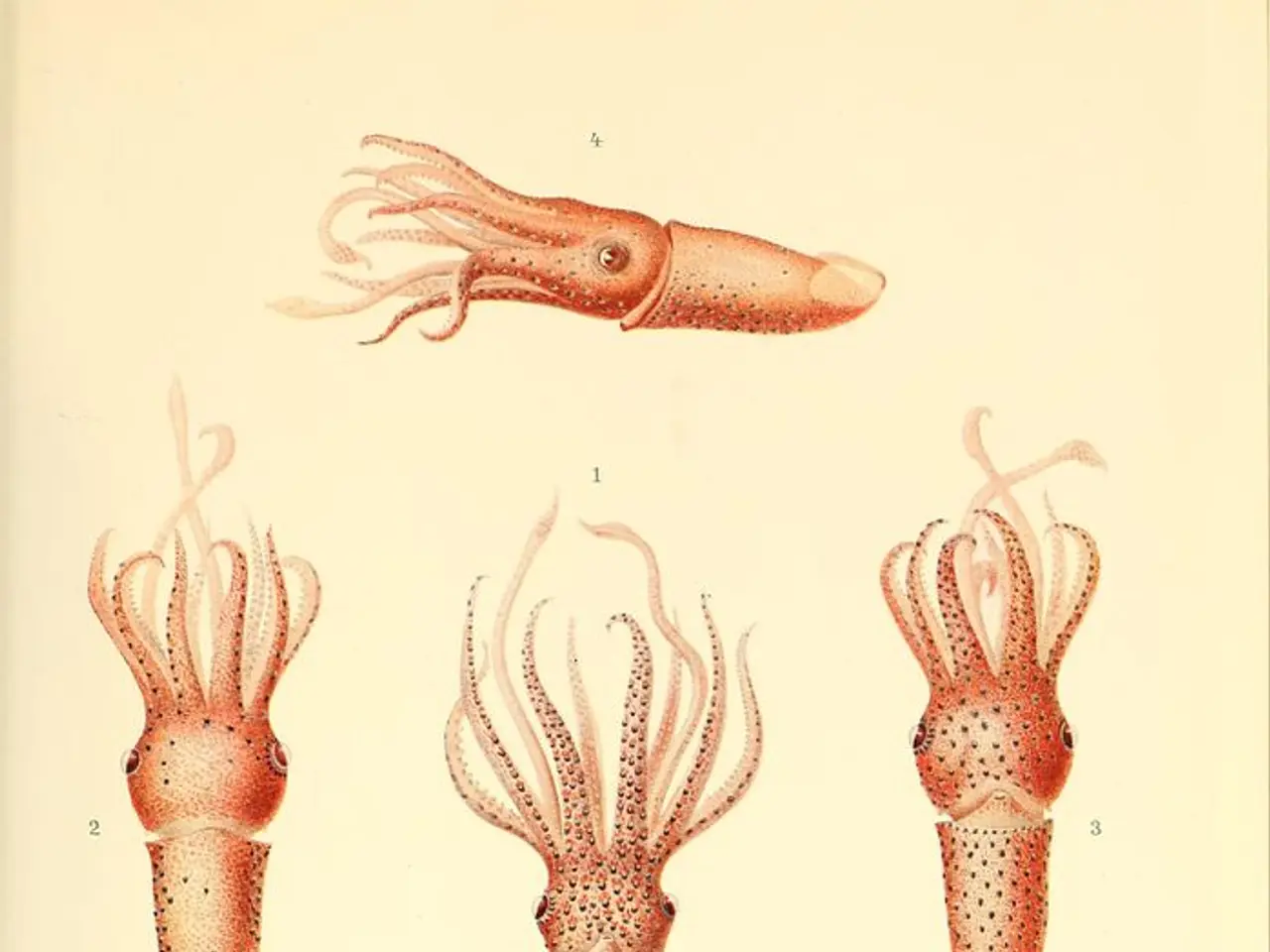Octopuses boast three times the number of brains as hearts they possess.
Octopuses, fascinating creatures belonging to the **Octopoda** order within the Cephalopoda class, have captivated scientists and the public alike with their unique physical features, behavior, and physiology. These marine invertebrates, which can be found in various species, each with distinct characteristics, are known for their intelligence, adaptability, and intricate nervous system.
One of the most striking features of octopuses is their physical structure. With eight arms covered in suckers, they are able to crawl, swim, and manipulate objects with remarkable dexterity. But it's not just their arms that set them apart. Octopuses have three hearts and nine "brains," making them one of the most complex invertebrates in the animal kingdom.
The three hearts in octopuses have specific functions. Two branchial hearts pump blood to the gills, ensuring efficient oxygenation, while the systemic heart distributes oxygen-rich blood to the rest of the body, including the muscles and organs. This unique heart structure supports their high metabolic rate and ensures efficient oxygenation of their tissues.
The nine "brains" of octopuses are a marvel of evolution. In reality, they have a large central brain and a peripheral nervous system that includes a large ganglion in each arm, often referred to as "nine brains" due to the degree of autonomy and coordination in their arms. The central brain processes sensory information and controls decision-making, while the peripheral nervous system allows each arm to function autonomously.
Each arm can perform tasks like crawling, grasping, and suckering without direct input from the central brain, though they are still connected and can communicate with it. This combination of a complex central nervous system and a distributed peripheral nervous system enables octopuses to exhibit remarkable intelligence, problem-solving abilities, and adaptability in their environment.
The distribution of neurons in octopuses allows for a partially decentralized nervous system, which is crucial for their high level of blood circulation required for energy. The fact that about 66% of the neurons in an octopus are in the limbs and localized into ganglia further supports this hypothesis.
A notable discovery was reported in a 2022 Nature Communications study, where an ancient octopus fossil was unearthed, offering insights into the evolution of these fascinating creatures. The findings suggest that octopuses have been around for at least 330 million years, demonstrating their resilience and adaptability throughout history.
Some notable types of octopuses include the Giant Pacific Octopus, known for its large size and intelligence; the Mimic Octopus, recognizable by its ability to mimic other sea creatures; the Blue-Ringed Octopus, small and brightly colored, known for its venom; and the Flapjack Octopus, with a unique flattened body shape and extensive arm webbing.
In conclusion, octopuses are truly remarkable creatures with a fascinating biology that continues to captivate researchers and the public alike. Their unique physical characteristics, behavior, and physiology have made them a subject of ongoing study and awe, shedding light on the complexities of evolution and the diversity of life on Earth.
- The unique heart and nervous system of octopuses not only support their high metabolic rate and efficient oxygenation, but also contribute to their exceptional intelligence, as about 66% of their neurons are in the limbs and localized into ganglia, enabling a partially decentralized nervous system.
- The medical field and health-and-wellness industry could potentially benefit from understanding the complex physiology of octopuses, given their ability to regulate their blood circulation and endure extreme conditions, which could inspire new treatments and strategies for managing certain medical conditions.




